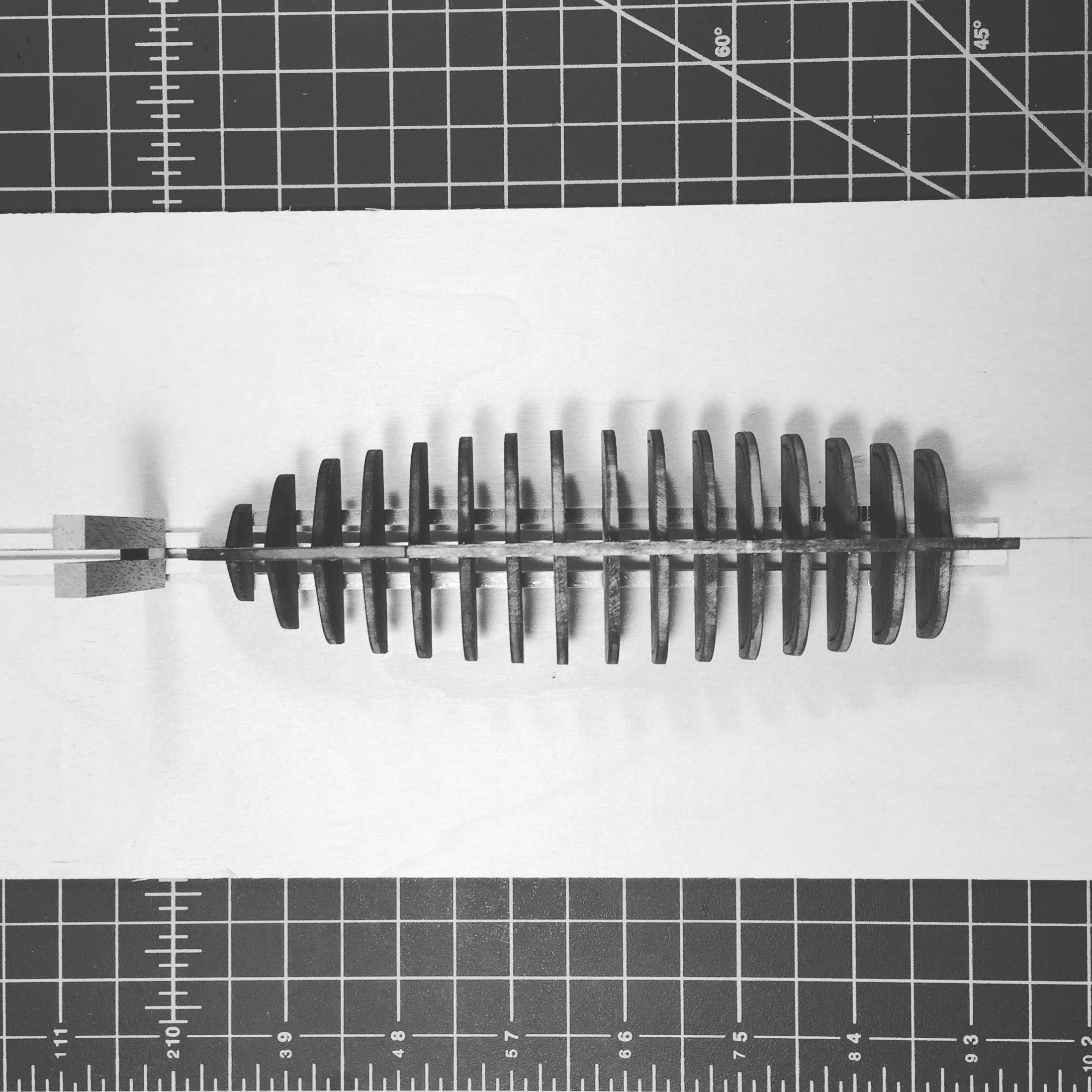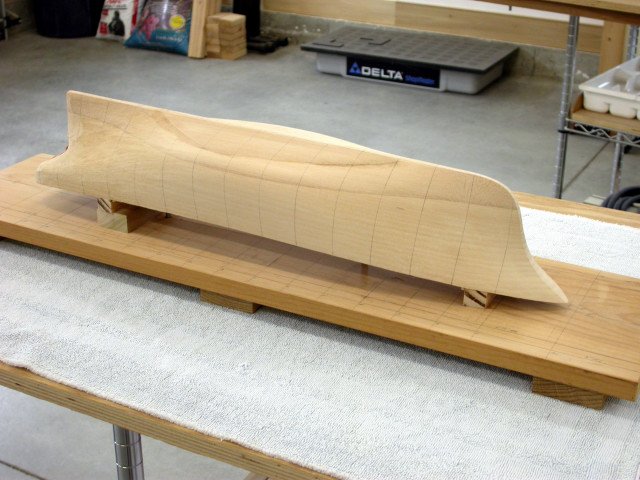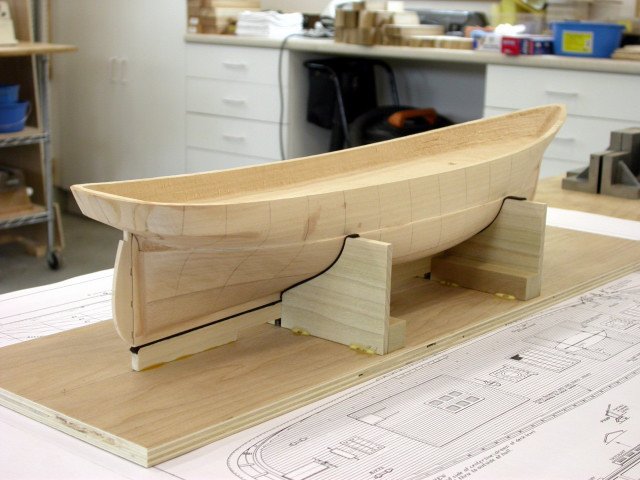-
Posts
991 -
Joined
Content Type
Profiles
Forums
Gallery
Events
Posts posted by Justin P.
-
-
-
On 7/14/2017 at 8:12 AM, Jim Rogers said:
Thank you for the information Bartley. I am now contemplating buying a Micro Mark Tablesaw and doing my own milling. We have one of the best exotic wood stores in the world about 50 miles from my house and as I plan on doing the inner bulkheads of my Syren using Redheart it could be worth it.
Do you mean Rockler?
-
-
The contemporary evidence supports both scenarios, though I would say that there are two types of contemporary evidence and they support two accurate scenarios. However dubious we might be with regard to the practicality of a below-tiller arrangment, Chucks research is sound.
It seems like there is a bit of reinventing the wheel here, let us not forget that these are 18th century models. Of course it was "impossible" to sail with that arrangment, thats why it was changed. Read Lavery's book as was suggested. It was also impossible to build pyramids, until they did. Now we do it differently, and cannot concieve of how they did it then. Its impossible without cranes.
The detractors it would seem are making the very same discovery that mid-18th century sailors made: tacking and gybing the boat is difficult if not impossible with the traveller located below the tiller. That does not mean that wasnt done or that models reflecting it are inaccurate. I for one appreciate the level of detail and research and can see (without being expert) that the contemporary evidence and primary sources support Chucks original schematic as possible if not likely. I actually appreciate that, with regard to model making, this particular model represents an interesting historic anamoly.
I am reminded that we dont fully understand how such things like the Pyramids, Stone Henge could have been built with primitive technology, YET they were, though probably with great difficulty. Likewise, though it seems impossible to sail a boat with a below-tiller-traveler arrangement, it actually was likely quite possible, though probably very difficult. Not an expert sailor by any means, but I do sail and I do have a boat, and I can concieve of a way to sail the boat (though not gracefully, and not sharply) with this arrangment. If I just needed to sail in a straight line, say from my ship to shore and wouldnt be doing a great deal of tacking... well... its possible.
-
-
-
Impressed by your perseverance with that last plank, looking forward to next steps...
- Estoy_Listo, Martin W, Blue Ensign and 1 other
-
 4
4
-
One thing Ive seen over and over, within this forum and in others, is that many common questions arise that typically already answered at length in other places. Any trip to another forum and you will see that asking a question like this normally is immediately followed by some snark comment about you not doing any due dilligence or research. One thing Ive always appreciated about this forum is that despite some builders clearly not bothering to read other logs, they STILL get lenthy anwers and help from some of the same people whom I know have answered that same question a half-dozen times or more... so really, I see nothing wrong with how anybody does anything around here. This forum is already far better than many others... no complaints at all.
For me, I often totally forget the like button, and actually regret not utilizing it more just to let others know that the work they put into their logs is appreciated, is being read and is still worth doing. As a relative newb, I rarely have anything useful to add, so try to remember that many of the likes your getting might be from folks not nessesarily ingoring your question, but maybe just are not able to answer it (or if like me, like your question because they themselves have the same one...).
Plus, who am I to critisize your work? An interesting phenomenom I noticed having read (I think) almost every Longboat build log is that the same people will comment "beautiful job" and "clean work" even though clearly one builder is light years better or cleaner. To me this is not a dishonestly but rather quite helpful, not only to the builder but also to the continued interest and growth of the hobby. Truly good criticism comes across in a way that is hard to distinguish, and I personally appreciate the subtlety and the respect people of all skill levels within this particular community show to each other.
Honestly... this is without a doubt one of the best forums I have ever been lucky enough to discover. No ego's, clean language, genuine interest in the work and best of all: lots of help....
-
-
21 hours ago, Kevin Kenny said:
Hi Maturin
when i first started out in ship modeling i had few local referances so every time i saw a referance book i could get my hand on i would purchase it. I have used the set from time to time but it has not been a great source of referance material on gathering specific data. Not taking anything away from it i had just hoped for more detailed information on the British invation of Trinidad . Perhaps the battle of 1797 was not a major event so was not covered extensively. I now have over 100 books in my collection.
Hi, thanks! Would you mind sharing the publication details? I'd still be interested in trying to find a copy and all I have to go on is what i can read in your video
 Cheers!
Cheers!
- Canute and thibaultron
-
 2
2
-
This is just beautiful work... if I get this point in my own work, I'll have lived beyond what I think I can achieve at the bench.
- CaptainSteve and Estoy_Listo
-
 2
2
-
This looks great, following along.
- Tigersteve, Elijah and Nirvana
-
 3
3
-
I look forward to following this build, love this Conny.
-
-
Great video, quick question: What is the 7 volume set on the shelf titled "Royal Navy"
- Seventynet and thibaultron
-
 2
2
-
-
1 hour ago, xken said:
Others have identified the possible issue being the rubber jaw inserts. A couple of points to consider next time remove the rubber inserts since you are clamping and a portion of your clamping force is lost in the rubber; and use scrap wood of the same kind being clamped between the jaws and wood being clamped. Jaws or a harder wood could leave impressions in the wood as well. I suspect what you are seeing is mold release(silicone based) that is used in the production process. Try cleaning with acetone and then light sanding after the acetone has dried completely. This is just one of the many "Joys" of model making.
Do you mean mold release from the wood or the rubber? Here is another view...
- thibaultron and Canute
-
 2
2
-
Have a small side project going, Mini Mamoli Brittania and for about a week I had the solid hull clamped into a rubber gripped Dremel vice while laying down the deck planking. Pulled it out today and to my suprise there is a darkening of the wood where the clamp comes into contact with the hull... No moisture in the shop, the wood has sat for at least several years drying... cant figure out what would cause the discoloration, wasn't clamped all that tightly...
Just curious. Explain like I'm five...
- Canute and thibaultron
-
 2
2
-
-
On 4/20/2017 at 10:57 AM, Pete Jaquith said:
This work is inspiring.
-
-
Well... I wish it were as easy as inventing a scenario and applying blanket treatment protocols. We are often faced with treatment problems that push the limits of what we would wish to do, and in those instances we would as you suggest, replace the rigging that needed it, as Ive already said. My guiding principal is not made up, and is not one that was developed in a vacuum. It is what guides all conservators of all things... Each object and in this case, each ship-model, would be evaluated independently and treated on an individualized basis.
Your original advice to simply not attempt to save any original material without regard to context, individual condition of rigging or even process would be viewed widely among conservators as an incorrect or even irresponsible approach. We/You simply do not have the ability to say that the rigging of all old ships is rotting and not worth saving, BUT we/you do have the ability to evaluate each model on a case-by-case basis utilizing the guiding principal that we would save what we could. I understand that you view threads/cords used in rigging as somehow in some kind of shockingly quick state of decay, however I am here to tell you as someone who has spent many years studying, writing and researching the decay of cellulosic based materials such as flax, linen and cotton that with care, consolidants and environmental control we can actually slow some of these processes down. I teach a graduate course on this very subject at a major university, so trust me when I say: saving the original materials is possible and well worth the effort if the right circumstances exist; which is more often than you would think.
Further... I regularly see materials of this sort happily live into their 500 and 600th year of use. It all depends on the individual item. The original project posted discussed rigging that was 250ish years old, and in my experience could concievable be in a state that with the right conditions and repair, might live another 250 years happily. If it were a situation where the rigging on this project were in such a state that they would only last another year, then Im sure the conservator would choose to replace the rigging, but only AFTER carefuly documenting, saving and very carefully archiving the patterns, knots and materials used in the original. Believe it or not, I have spent days unraveling and drafting sewing patterns for original structures... its part of the job.
Now... to answer your question. The first thing I would do is manage expectations and explain all this to the Board. I would share many examples of treatment scenarios and other work which would closely communicate what they are likely to receive from me; a conservator. I would explain to them (as I would hope their curators would have already done) that much valuable information is at risk of loss and/or found in original materials and this is why a conservative approach is preferred. Now... if that is not enough, they are free to go somewhere else but they would be warned that they are not likely to get something else from another reputable conservator. A private citizen with no formal training, accreditation or peer-review might happily do it; and I wouldnt stop them. But I have my career and reputation to protect. I am not bound to them and their models and they are not bound to my guiding principal. However... if I worked for them they would get what I recommend and no more. I have regularly told clients (mostly dealers) No, I wont do it and walked away from thousands of dollars in work, that is the life. A ship-model restored sells better than one that has been conserved precisely because restoration replaces much of the signs of age, leaving little of the original work behind.
In the case of incomplete rigging, it may very well be that I choose to literally fix loose ends and leave the lost rigging lost, it really depends.
Again...in some cases, replacing the rigging is the only option Im sure, but SHOULD NOT be the go to practice. I hate the feeling that Im in some kind of argument here, is there no value as you see it in attempting to save original components? The nice thing is, truly, that you are not bound to a conservators approach. You could do whatever it is you want, but be warned, monetary value is often lost in inappropriate restoration activities which is why I ALWAYS tell people to slow down, call a conservator and THEN make a decision.
-
1 minute ago, popeye2sea said:
I still feel, with regard to her adding short splices here and there, that she has changed the ship. If someone looked at the ship 200 years from now would they assume that splices were supposed to be there and usual for rigging of the period? Or, would they have to guess which were the efforts of a conservator?
Regards,
With regard to museum, art gallery and library artifacts, yes. The current standard of practice calls for extensive documentation, condition reports and photographic recording of all work completed by conservators. In 200 years, a researcher would see clearly in the catalog record that conservation work had been undertaken, by whom, when and to what extent. They would easily be able to determine what was original to the piece and what was the addition, subtraction and manipulation of the conservator.
You are fundamentally right though, she is by doing anything changing the ship. However, leaving it as is would be be a disservice to the piece and the collection, while doing too much would be the same. The conservator lives in the middle... In doing some and not all, the research 200 years from now can still enjoy what is left of the original... the point is to stabilize and lessen the distraction overall of the evidence of age and misuse/handling. Now the object lives in the Museum it will have a better life and the original components will last much longer.
- Richard Griffith, druxey, mtaylor and 4 others
-
 7
7
-
On 1/20/2017 at 4:23 AM, bhermann said:
Capt. Jack - I used Testors Model Master acrylics in painting Bluenose. Four colors - Insignia Red, Blue Angels Yellow, Flat Black, and Flat White. I did prime and sand the surfaces before applying final coats.
I recommend flat paints as they tend to scale better. Gloss paints will pop, but to my eye they look a bit unrealistic.
Bob
What primer did you use for the Model Masters?






Need a tip on staining or coloring the running rigging
in Masting, rigging and sails
Posted · Edited by maturin
I teach a materials permanence course to graduate art students at University and often lecture on the longevity of "aging" techniques. I can point to (if interested) numerous academic articles dealing specifically with the acidity of using tea, tannins or other plant based materials for this purpose. While truly holding their "age" through numerous artificial aging tests, they ultimately do lead to the fastest molecular breakdown of cellulosic materials (i.e cotton and linen thread/rope).
In conservation of artifacts we often use Golden and/or Liquitext acrylic paints as they are scientifically formulated for archival use and light-fastness. As JerseyCity Frank also pointed out they do a marvelous job particularly with aging threads and fabrics. They do not have degradation products and have been proven in artificial aging tests to hold their color. Throw a bit of beeswax dressing over the newly toned thread and you have a great modeling material.
I cant speak to Chucks thread source, but can say that it can sometimes be better to avoid aging all together go with something that already has the right look and tone. OEM products often do this well...
A final comment Ill make is that I see so many ship models ruined by "over-aging" so my personal opinion is dont do it you dont have to...